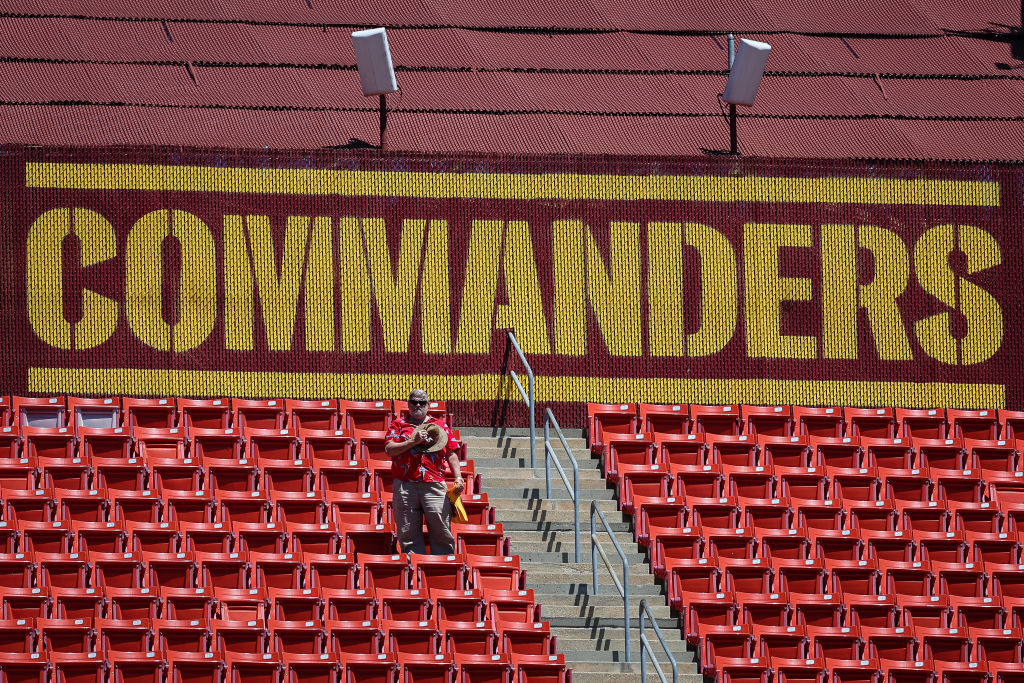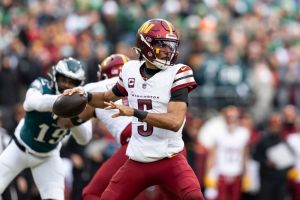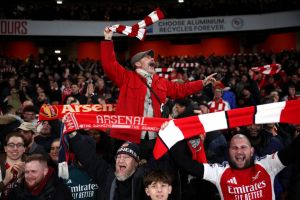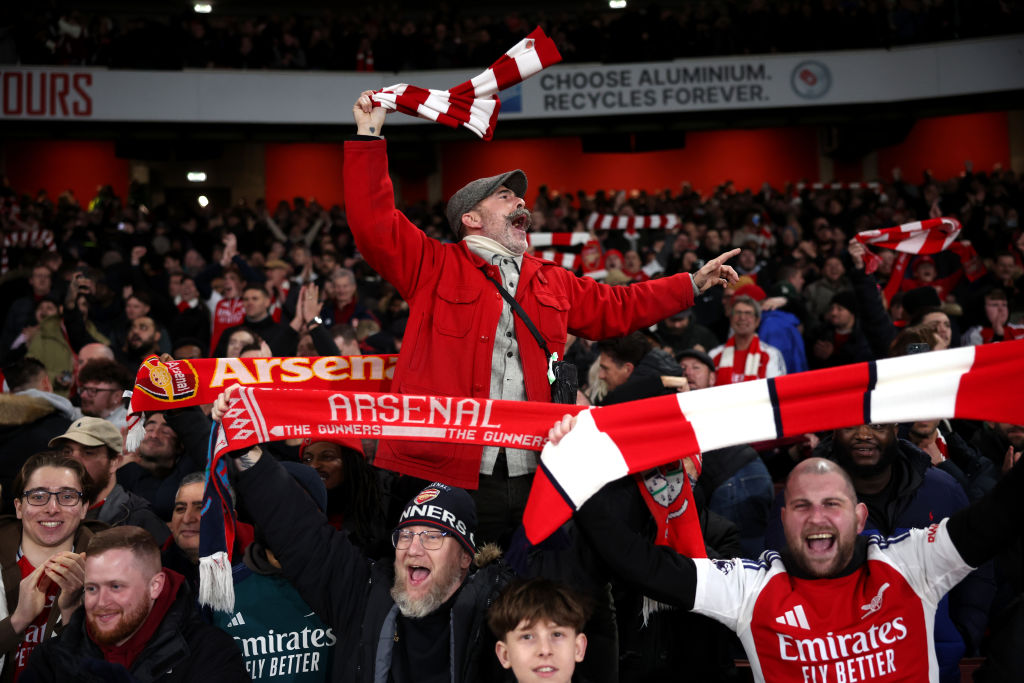The hapless Washington Commanders can’t do anything right. And I do mean anything. In September, a first-time Washington Commanders season ticket holder won more than $14,000 in a charitable raffle. After about six weeks of pestering the franchise, he finally received the check. It bounced.
Of course, Washington’s football team — whose new name I can hardly muster the energy to speak, let alone write — is having yet another lackluster year on the gridiron. The team enjoys a miserable, if predictable, losing record. Coach Ron Rivera, who all things being equal is better than many of his predecessors, earlier this month seemed to throw shade at underperforming (and now injured) quarterback Carson Wentz. “The truth is that this is a quarterback-driven league, and if you look at the teams that have been able to sustain success, they’ve been able to build it around a specific quarterback,” admitted Rivera.
Lack of a franchise quarterback, a growing list of injuries, and insipid play are, sadly, the least of the franchise’s problems. There have been reports of a toxic club culture, sexual harassment (resulting in a 2021 $10 million fine), and accounting irregularities. Their Maryland-based stadium, Fedex Field, is quite literally falling apart, endangering players and fans. Virginia lawmakers earlier this year abandoned legislation to attempt to lure the organization to the Old Dominion. A majority on the DC Council does not want them in the District either.
Even their most recent victory against the Green Bay Packers and an aging Aaron Rodgers was tainted. When fans began chanting and waving signs saying “Sell the team!” at the first half’s two-minute warning, stadium security approached them and demanded they put the signs down. A team spokesman later apologized.
Then there’s owner Daniel Snyder, perhaps the most vilified man in football, who changes head coaches with the regularity of congressional elections. More than ten years ago, many were already calling Snyder the most hated man in franchise history (he bought the team in 1999). Since then, there have been sexual harassment allegations against him. And two years ago, the Washington Post reported that the team had put together lewd videos taken from outtakes of the cheerleaders’ 2008 and 2010 swimsuit calendar shoots that, unbeknownst to the cheerleaders, included partial nudity.
As calls for him to give up the team intensify, reports swirl that Snyder has dirt on other prominent NFL figures, including Dallas Cowboys owner Jerry Jones and NFL commissioner Roger Goodell (if true, I believe this is called blackmail). A Snyder spokesperson earlier this year declared that Snyder, who grew up a Redskins fan in their glorious heyday, has no intentions of selling the team. “There has been a well-orchestrated and well-documented campaign against Dan Snyder for several years now aimed at mudding the waters around his ownership of the team,” the owner’s attorney told Sports Illustrated in a recent exclusive interview.
The team hasn’t been consistently good in about thirty years. The last time they had consecutive winning seasons was 2015 and 2016, when they went an uninspiring 9-7 and 8-7-1 respectively (they secured a wild card berth in 2015, and immediately lost to the Green Bay Packers). They haven’t won a playoff game since 2005, and they haven’t won a Super Bowl since 1991, when I was eight years old.
I remember that Super Bowl season well. My family attended the team’s Week 11 game, in which the Skins, led by Mark Rypien, Art Monk, and Darrell Green, trounced the Atlanta Falcons 56-17. In elementary school, many of my classrooms were draped in the team’s paraphernalia. Families across the DC area jealously guarded their Sunday afternoons. The players, and their Hall of Fame coach Joe Gibbs, were household names.
Both sides of my extended family have been rooting for the team since they arrived in the area after World War II. When I was a kid, I drew a picture of the entire team and my grandfather sent it to Gibbs. Not only did Gibbs respond, he sent me a bunch of stickers and a signed note saying he had put my illustration up in their clubhouse.
Fans under thirty have no memory of the team’s glory days, which included five Super Bowl visits in 20 years and three Super Bowl championships. All they know are the many losing seasons and shameful gaffes. There was quarterback Gus Frerotte, who injured himself head-butting a wall after he scored a touchdown. And wide receiver Michael Westbrook’s helmet-throwing incident that resulted in an unsportsmanlike conduct penalty that lost the team an important conference game. And, perhaps most devastating, the team’s decision to foolishly keep star rookie quarterback Robert Griffin III on the field despite a dangerous injury — a further injury in a wild-card game ruined his career.
And, of course, there was the ridiculous decades-long and largely contrived controversy over the team’s name. Despite years of polling indicating most Native Americans were not offended by the mascot, the franchise eventually bowed to woke capital and relentless media pressure and announced in 2020 they would retire the Redskins. I have multiple times been party to conversations where liberal white women lectured black men from the DC area on the relationship between systemic racism and the Redskins mascot. Those men handled it better than I would have.
Somehow, liberal elites convinced themselves that it is not generational poverty or disproportionately high levels of domestic abuse, alcoholism, and drug addiction that account for negative outcomes for so many indigenous Americans, but the name of a football team in our nation’s capital. Does anyone actually think Native American children’s test scores will now skyrocket because they are no longer held back by an offensive sports mascot?
A once-storied franchise has descended into embarrassment. I doubt this tragedy will end any time soon, though a new owner would help, as would a better stadium and a better name. Many, like myself, long ago gave up watching Washington’s football team, even if we sport, perhaps provocatively, the old team logo on our clothes and cars. Nowadays, that’s about the only football tradition worth cherishing in our nation’s capital.

























